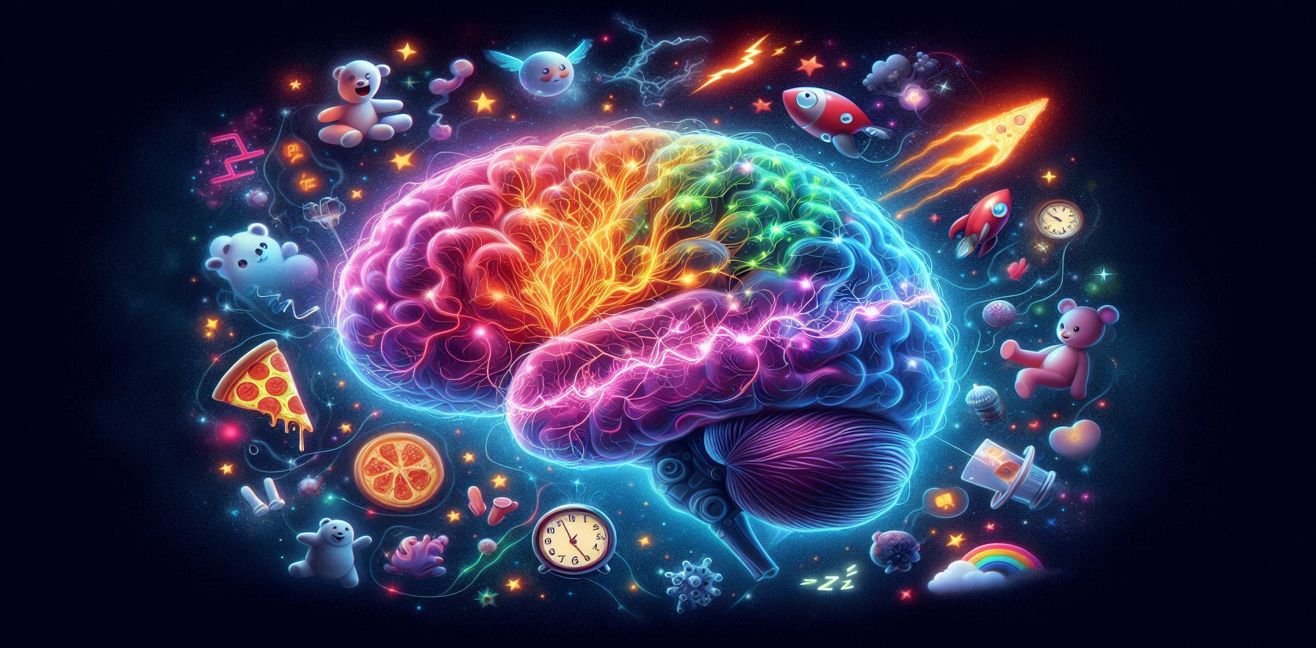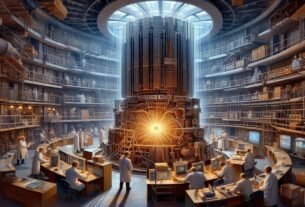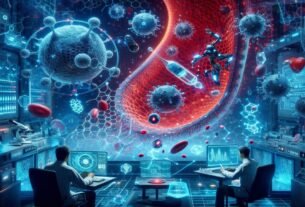Hello, dear science enthusiasts! 🌌
Welcome to the mysterious world of sleep! Today, we’ll explore in detail what our brain does during the night, the biological and neurological mechanisms behind dreams, and why dreams are often so bizarre and illogical. Get ready, because your brain entering “work mode” at night is a journey full of science and humor. 🧠✨
1. Sleep Stages and the Brain’s Nighttime Tour
Human sleep consists of four main stages and the REM (Rapid Eye Movement) stage:
NREM (Non-Rapid Eye Movement) Stage:
- Stage 1: Light sleep, brain waves oscillate between alpha and theta. The body begins to slow down.
- Stage 2: Middle sleep, heart rate and body temperature drop, K-complexes and sleep spindles appear.
- Stage 3/4 (Deep Sleep): Dominated by delta waves; cell repair occurs, growth hormone is released, and the immune system strengthens.
REM Stage:
- Brain activity reaches levels almost equivalent to wakefulness.
- Rapid eye movements are observed.
- Muscle tone decreases (atonia), preventing us from physically acting out dreams.
- Approximately 80–90% of dreams occur during this stage.
🧪 Scientific Note: During REM, the prefrontal cortex (responsible for logical thinking) is less active, while the limbic system (emotions and memory) remains highly active. That’s why dreams are often bizarre, emotional, and illogical.
2. The Neurobiology of Dreams
Dream formation can be explained by several mechanisms:
2.1. Neurotransmitters and Chemical Effects
- Serotonin and Dopamine: Activate the brain’s reward and pleasure centers, enriching dream content emotionally.
- Acetylcholine: High during REM, stimulates the cerebral cortex, contributing to visual dream formation.
- Noradrenaline: Low during REM, which reduces logical structuring in dreams.
2.2. Brain Networks and Dream Content
- Limbic System: Related to emotional tone and memory. The amygdala triggers fear and excitement.
- Hippocampus: Helps process daily experiences and links dream content to memory.
- Prefrontal Cortex: Controls logical thinking; low activity during REM leads to illogical dreams.
2.3. Scientific Theories
- Memory Consolidation Theory: Dreams help transfer information learned during the day into long-term memory.
- Emotional Processing Theory: Dreams help process stressful and emotional experiences, aiding coping with trauma.
- Creativity and Problem-Solving Theory: Dreams act as a “test lab,” allowing the brain to explore novel connections and generate creative solutions.
3. Dream Physiology and Scientific Measurement
- EEG (Electroencephalography): Measures electrical activity of the brain and distinguishes between REM and NREM stages.
- fMRI (Functional Magnetic Resonance Imaging): Visualizes which brain regions are active during dreams.
- Polysomnography: Comprehensive sleep study method, measuring brain waves, eye movement, muscle activity, and heart rate.
🧬 Interesting Fact: Oxygen consumption increases during dreaming, indicating an active “nighttime laboratory” in the brain.
4. Dream Content and Psychological Perspective
- Dreams are often symbolic and emotionally intense.
- Nightmares: Result from high amygdala activity and stress hormones.
- Lucid Dreams: The dreamer is aware and can exert control, associated with partial activation of the prefrontal cortex.
- Dream content varies based on cultural, individual, and emotional factors.
5. Fascinating and Fun Dream Facts
- The average person dreams approximately 1,500 hours per year.
- Brain activity during REM approaches wakefulness levels.
- Infants and children experience more REM sleep, crucial for learning and development.
- Artists, scientists, and writers have drawn inspiration from dreams. Example: Kekulé reportedly visualized the benzene ring in a dream.
6. A Touch of Humor and the Brain’s Fun Side 😅
- If dreams were a movie: a “surreal mix of comedy, action, and horror.” 🎬
- At night, the brain opens its own Netflix channel, and we are subscribers while asleep.
- If politicians shared their dreams: “Why am I always being chased by pizza?” 🍕🙃
🎯 Conclusion
Dreams are a combination of complex biological, neurological, and psychological processes that the brain performs during the night.
- Logic rests during sleep,
- Emotions and memory remain active,
- And the result is sometimes bizarre, sometimes mesmerizing dreamscapes.
The takeaway is simple:
👉 Dreams are not just entertainment—they are our brain’s nighttime laboratory.
👉 The next time you have a strange dream, know that your brain is still hard at work for you. 🌙✨




